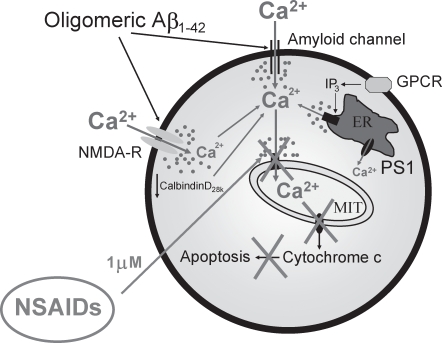Figure 9. A model of Aβ-induced toxicity and neuroprotection by NSAIDs based on mitochondrial Ca2+.
Aβ1–42 oligomers and the toxic fragment Aβ25–35 induce a large entry of Ca2+ through the plasma membrane likely mediated by formation of amyloid channels and/or NMDA receptors. This entry promotes in a sequential manner mitochondrial Ca2+ overload, ROS production, mPTP opening, cytochrome c release, apoptosis and cell death. Other factors related to AD may favor mitochondrial Ca2+ overload including exaggerated IP3-induced release of Ca2+ from the ER in loss of function PS1 mutants related to familial AD and/or decreased abundance of endogenous Ca2+ buffers as calbindinD28k during aging or sporadic AD. NSAIDs, at low concentrations (1 µM), depolarize partially mitochondria and inhibit mitochondrial Ca2+ overload, thus preventing cytochrome c release and apoptosis induced by Aβ oligomers.

